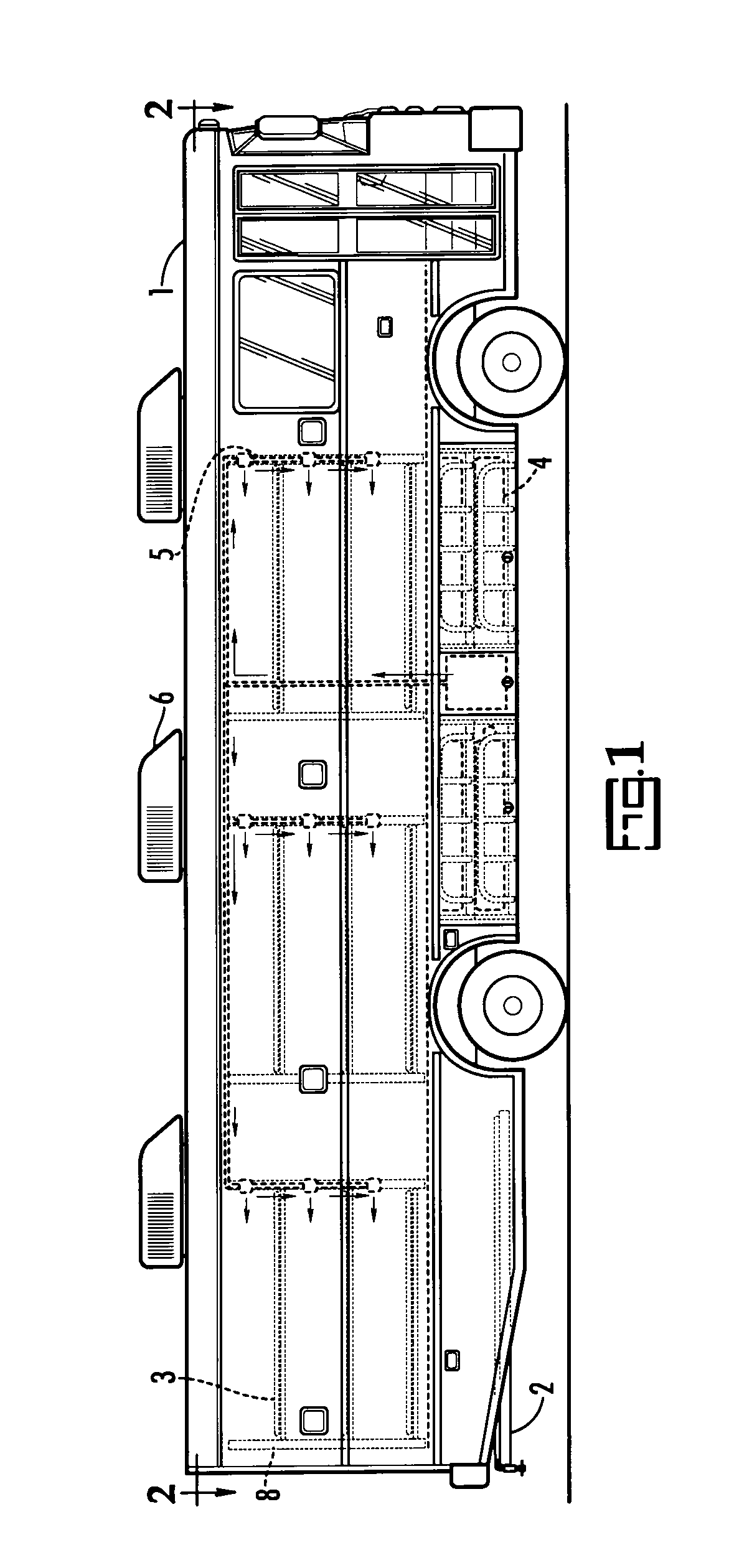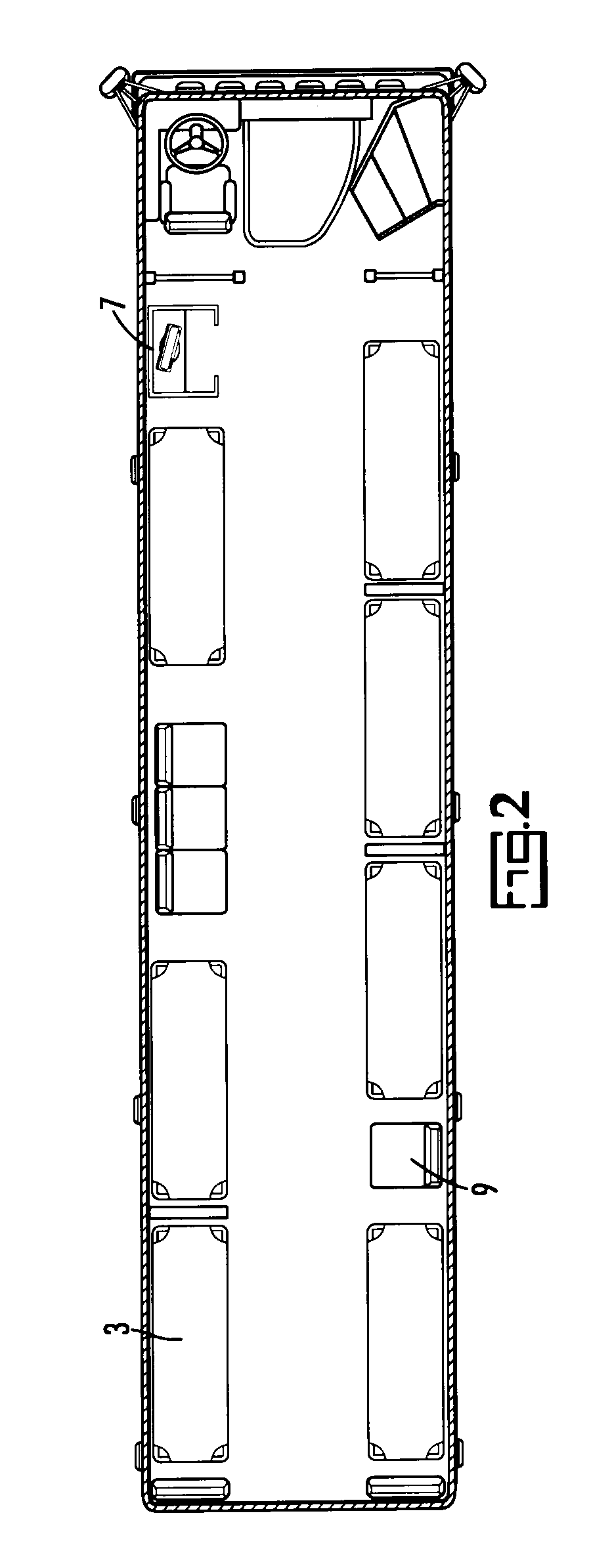Emergency response vehicle
a technology for emergency response and vehicles, applied in the field of emergency response vehicles, can solve the problems of affecting the treatment or evacuation of victims or patients, the total number of patients that can be transported is greatly limited, and the evacuation of people in other coverage areas is difficult to achieve the effect of easy cleaning
- Summary
- Abstract
- Description
- Claims
- Application Information
AI Technical Summary
Benefits of technology
Problems solved by technology
Method used
Image
Examples
Embodiment Construction
[0030]The invention relates to a vehicle used in transporting or treating large numbers of victims or patients from a mass-casualty incident. Such a vehicle might be needed to respond to numerous types of emergency events, such as natural disasters (e.g., hurricanes, floods, earthquakes, pandemics), breaches of homeland security (e.g., terrorist attacks), major accidents (e.g., train derailments, airplane accidents, bridge collapse, major highway pile-ups), and military situations (e.g., evacuation of wounded troops to or from a military hospital). In any of these emergency events, it might be necessary, for example, either:
[0031]1. to evacuate the victims from the disaster site to a hospital or other treatment facility;
[0032]2. to evacuate the patients from one treatment facility to an alternate treatment facility or to a safe area (e.g., to temporarily move patients from a hospital or nursing home that is in the path of a hurricane);
[0033]3. to set up a temporary treatment facilit...
PUM
 Login to View More
Login to View More Abstract
Description
Claims
Application Information
 Login to View More
Login to View More - R&D
- Intellectual Property
- Life Sciences
- Materials
- Tech Scout
- Unparalleled Data Quality
- Higher Quality Content
- 60% Fewer Hallucinations
Browse by: Latest US Patents, China's latest patents, Technical Efficacy Thesaurus, Application Domain, Technology Topic, Popular Technical Reports.
© 2025 PatSnap. All rights reserved.Legal|Privacy policy|Modern Slavery Act Transparency Statement|Sitemap|About US| Contact US: help@patsnap.com



